#Application Programming Interfaces integration
Explore tagged Tumblr posts
Text
#software development#Flutter developer#mobile app custom development#app developers#Flutter app development#Android app development#iOS app development#Flutter Developer Role#ideal Flutter developer#Flutter framework#Application Programming Interfaces integration#Flutter Developer Job Description#Flutter Interviews and Assessments
0 notes
Text
Software Development Market Anticipated to Grow Owing to Digital Transformation
The Software Development Market offers a spectrum of solutions ranging from custom application development and enterprise resource planning (ERP) software to mobile apps, cloud-native platforms, and DevOps toolchains. These products streamline workflows, automate business processes, and enable real-time analytics, driving operational efficiency and improving time-to-market. Organizations leverage these solutions to enhance customer engagement, scale infrastructure dynamically, and reduce total cost of ownership.
Get More Insights on Software Development Market https://www.patreon.com/posts/software-market-131141770

#SoftwareDevelopmentMarket#AIdrivenAutomation#IDEs (for Integrated Development Environments)#APIs (for Application Programming Interfaces)#CoherentMarketInsights
0 notes
Text
API-First Development: Revolutionizing Digital Integration and Scalability

Explore how API-first development is transforming digital integration and scalability. Learn how this approach streamlines development, enhances flexibility, and enables seamless communication between systems, driving innovation and growth in modern applications. Visit now to read more: API-First Development: Revolutionizing Digital Integration and Scalability
#agile development#api management#api strategy#api-first development#application programming interfaces#digital integration#digital transformation#microservices architecture#reusable apis#scalable software#software delivery velocity
0 notes
Text
Understanding the Basics of APIs
Application Programming Interfaces (APIs)
crucial components in modern software development. They allow different software systems to communicate with each other and facilitate the integration of various services and functionalities. This article explores the basics of APIs, their types, and their importance in today’s tech landscape.

What is an API? for more........
An API (Application Programming Interface) is a set of rules and protocols that allows one piece of software to interact with another. It defines the methods and data formats that applications can use to request and exchange information. APIs enable different software systems to communicate, share data, and perform operations without needing to understand each other's underlying code.
Key Concepts:
Endpoint: A specific URL where an API service can be accessed. Endpoints represent different functionalities or resources offered by the API.
Request: The action taken by a client to interact with an API, such as retrieving data or sending information. Requests typically include a method (GET, POST, PUT, DELETE), headers, and sometimes a body.
Response: The data or acknowledgment returned by the API after processing a request. Responses usually include status codes, headers, and a body containing the requested information or result.
Authentication: A process used to verify the identity of a user or application accessing the API. Common methods include API keys, OAuth tokens, and Basic Auth.
Types of APIs
Web APIs: Also known as HTTP APIs or REST APIs, these are accessed over the web using HTTP/HTTPS protocols. They are widely used for web services and allow different systems to communicate via the internet.
RESTful APIs: Representational State Transfer (REST) APIs use standard HTTP methods and are designed to be stateless. They operate on resources identified by URLs and support various formats like JSON and XML.
SOAP APIs: Simple Object Access Protocol (SOAP) APIs use XML-based messaging protocols for exchanging information. SOAP APIs are known for their robustness and are often used in enterprise environments.
GraphQL APIs: A query language for APIs that allows clients to request specific data. GraphQL APIs provide a more flexible and efficient way to interact with data compared to REST APIs.
Library APIs: These APIs are part of software libraries or frameworks that provide predefined methods and functionalities for developers to use in their applications.

Click now
For those interested in deepening their understanding of APIs, including practical applications and advanced concepts, Getege offers a comprehensive course. This course provides detailed insights into API design, implementation, and best practices, helping you master the fundamentals and more complex aspects of API development.
#APIs#Application Programming Interfaces#REST API#SOAP API#GraphQL API#Web APIs#API Basics#API Integration
0 notes
Text
How APIs are transforming the legal industry
How APIs are transforming the legal industry
APIs, or application programming interfaces, are snippets of software code that let one application access and use the features or data of another application. They are widely used in various industries and sectors, including the legal field. In this blog post, we will explore some of the ways that APIs are affecting the legal ecosystem and how they can provide value for lawyers and…

View On WordPress
0 notes
Text
ever wonder why spotify/discord/teams desktop apps kind of suck?
i don't do a lot of long form posts but. I realized that so many people aren't aware that a lot of the enshittification of using computers in the past decade or so has a lot to do with embedded webapps becoming so frequently used instead of creating native programs. and boy do i have some thoughts about this.
for those who are not blessed/cursed with computers knowledge Basically most (graphical) programs used to be native programs (ever since we started widely using a graphical interface instead of just a text-based terminal). these are apps that feel like when you open up the settings on your computer, and one of the factors that make windows and mac programs look different (bc they use a different design language!) this was the standard for a long long time - your emails were served to you in a special email application like thunderbird or outlook, your documents were processed in something like microsoft word (again. On your own computer!). same goes for calendars, calculators, spreadsheets, and a whole bunch more - crucially, your computer didn't depend on the internet to do basic things, but being connected to the web was very much an appreciated luxury!
that leads us to the eventual rise of webapps that we are all so painfully familiar with today - gmail dot com/outlook, google docs, google/microsoft calendar, and so on. as html/css/js technology grew beyond just displaying text images and such, it became clear that it could be a lot more convenient to just run programs on some server somewhere, and serve the front end on a web interface for anyone to use. this is really very convenient!!!! it Also means a huge concentration of power (notice how suddenly google is one company providing you the SERVICE) - you're renting instead of owning. which means google is your landlord - the services you use every day are first and foremost means of hitting the year over year profit quota. its a pretty sweet deal to have a free email account in exchange for ads! email accounts used to be paid (simply because the provider had to store your emails somewhere. which takes up storage space which is physical hard drives), but now the standard as of hotmail/yahoo/gmail is to just provide a free service and shove ads in as much as you need to.
webapps can do a lot of things, but they didn't immediately replace software like skype or code editors or music players - software that requires more heavy system interaction or snappy audio/visual responses. in 2013, the electron framework came out - a way of packaging up a bundle of html/css/js into a neat little crossplatform application that could be downloaded and run like any other native application. there were significant upsides to this - web developers could suddenly use their webapp skills to build desktop applications that ran on any computer as long as it could support chrome*! the first applications to be built on electron were the late code editor atom (rest in peace), but soon a whole lot of companies took note! some notable contemporary applications that use electron, or a similar webapp-embedded-in-a-little-chrome as a base are:
microsoft teams
notion
vscode
discord
spotify
anyone! who has paid even a little bit of attention to their computer - especially when using older/budget computers - know just how much having chrome open can slow down your computer (firefox as well to a lesser extent. because its just built better <3)
whenever you have one of these programs open on your computer, it's running in a one-tab chrome browser. there is a whole extra chrome open just to run your discord. if you have discord, spotify, and notion open all at once, along with chrome itself, that's four chromes. needless to say, this uses a LOT of resources to deliver applications that are often much less polished and less integrated with the rest of the operating system. it also means that if you have no internet connection, sometimes the apps straight up do not work, since much of them rely heavily on being connected to their servers, where the heavy lifting is done.
taking this idea to the very furthest is the concept of chromebooks - dinky little laptops that were created to only run a web browser and webapps - simply a vessel to access the google dot com mothership. they have gotten better at running offline android/linux applications, but often the $200 chromebooks that are bought in bulk have almost no processing power of their own - why would you even need it? you have everything you could possibly need in the warm embrace of google!
all in all the average person in the modern age, using computers in the mainstream way, owns very little of their means of computing.
i started this post as a rant about the electron/webapp framework because i think that it sucks and it displaces proper programs. and now ive swiveled into getting pissed off at software services which is in honestly the core issue. and i think things can be better!!!!!!!!!!! but to think about better computing culture one has to imagine living outside of capitalism.
i'm not the one to try to explain permacomputing specifically because there's already wonderful literature ^ but if anything here interested you, read this!!!!!!!!!! there is a beautiful world where computers live for decades and do less but do it well. and you just own it. come frolic with me Okay ? :]
*when i say chrome i technically mean chromium. but functionally it's same thing
461 notes
·
View notes
Text
maestro’s muse 💿 applications open!
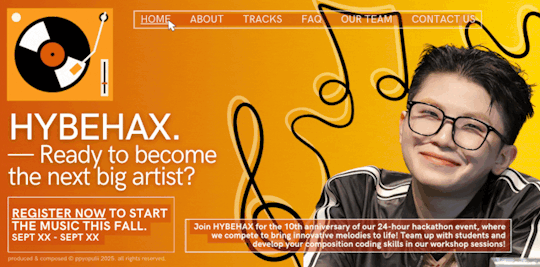
PREVIEW. The show’s about to start… are you ready to be in charge of the music? Apply now to become an organizer for HYBE University’s 10th annual hackathon! 🎶
FEATURING. lee jihoon x gn!reader, various non-idol!hybe groups & reader GENRE(S). coming of age, fluff, some angst EXPLICITS. none!
JAY’S MUSINGS. prologue (part one) for maestro’s muse, the series. this one is relatively short (think of it as a teaser, almost), but part two should be up in a few days! enjoy :)

www.hybehax.tech/apply
⏳ Loading Application…

HYBEHAX is a 24-hour collegiate level hackathon where hackers come together at HYBE University to compete and bring innovation to life. This year, our theme specializes in music and creating a festival everyone can enjoy. Interested in working the event? Fill out the questionnaire below and our team will reach out to you once the application period has ended.
SECTION ONE — General Application
* Indicates a required field.
What year of college are you going to be for the upcoming school year?*
◻️ Freshman/First-Year
☑️ Sophomore/Second-Year
◻️ Junior/Third-Year
◻️ Senior/Fourth-Year
◻️ Other (please specify):
What teams would you be interested in applying for?*
Note: You are allowed to pick more than one team, but should you be asked to interview with us, you will only end up placed on one team.
◻️ Marketing Team (handles social media content and outreach)
◻️ Sponsorship Team (specializes in securing and managing POCs with sponsoring companies)
◻️ Tech Team (manages the digital infrastructure of our hackathon, such as the websites/forms/app)
☑️ Design Team (works on merchandise and various designs for social media, sponsors and digital platforms)
Would you be interested in a leadership position, i.e. Team Lead?*
Team Leads delegate specific tasks to members and collaborate with other Leads/E-board to ensure preparations are properly managed in a timely manner.
☑️ Yes, I’d be interested!
◻️ No, I’d like to only contribute as a HYBEHAX organizer.
Tell us a little about yourself!*
What’s your story? What drew you to want to become an organizer for HYBEHAX? 200 words max.
Hello! As a rising sophomore and current freshman, I could only be a volunteer for this past hackathon season. However, the energy I was met with was like no other; I had never before seen so many wonderful people bond together in a space to share, create, and be known for their accomplishments. I found myself inspired by the passion the hackers embodied and want to work towards creating a similar space this year, especially in light of it being the 10th year anniversary. I hope to bring that same energy and creativity to the table as an organizer! Thank you for this opportunity!
-> Next Section
SECTION TWO — Design Team Application
* Indicates a required field.
Which of the following design programs do you have experience with?*
Check all that apply.
☑️ Adobe Illustrator
☑️ Adobe Photoshop
☑️ Canva
☑️ Figma
☑️ Others (fill out as you see fit): also have experience in procreate, as well as designing stickers with brandmaker & t-shirts/hoodies specifically with custom-ink!
What made you apply for Design Team?*
200 words max.
As a computer science major who has a hobby for all things artistic, I’ve always been interested in the intersection of the two. I believe that integrating technology and the arts is crucial for navigating our ever-changing world. I love using what I know about computer science to further my passion for art, such as messing around with designing UI/UX interfaces for applications and then coding them up. I think it’s fun :)
(OPTIONAL) Portfolio Upload
📎 www.lyrart.com/home
(OPTIONAL) Resume Upload
📎 resume20XX.pdf
-> Submit Application
⏳ Submitting…
Thank you for applying to be a HYBEHAX organizer! Our team will reach out to you soon after the application period ends with results.

#seventeen#lee jihoon x reader#woozi x reader#seventeen x reader#seventeen fluff#seventeen imagines#lee jihoon imagines#lee jihoon fluff#woozi fluff#woozi imagines#🏆 hybehax#maestro’s muse 💿 ljh#🎶 ppyopulii’s discography
38 notes
·
View notes
Text
One of my pet peeves in robot fiction is AIs using HUDs or GUIs to interact with its own systems. Those are graphical user interfaces. They're for humans. Robots aren't users; they are the computer. They don't need that. Even if the AI is purely software and has no native integration with the hardware, it would use an API (application program interface), which is still just straight code.
A robot wouldn't get a pop-up saying low battery, nor would it have to close it. They would experience it like a human. The robot would be alerted in the same way a human just becomes aware of the sensation of itching or hunger: you're always processing data and now there's a new type of data which is different. And the way it would dismiss the alert would be to just decide to do nothing about it.
Problems can occur when 1) the signal interrupts other processes and the error must be addressed before other processes can continue, but for whatever reason the error can't be fixed, or 2) the signal is non interrupting, but it's being sent so repeatedly/frequently that it floods the incoming data queue.
32 notes
·
View notes
Text
* Personal view
Happy Sunday and praise the lord of The Sims
The Sims 3 - Nraas by Twallan
I often use MasterController to make me feel like a god of Sims' lives. Often use DebugEnabler too to reset object textures.
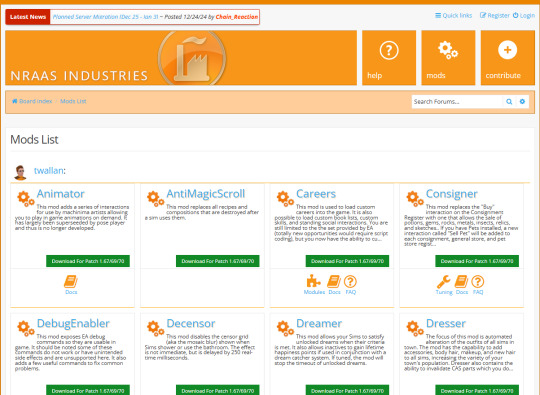
The Sims 2 - Numenor The ModFather
(I'm no longer play The Sims 2, but Numenor is still the best The Sims 2 core modder in my memory. Numenor is still active on MTS, wow.. his last activity was yesterday.)
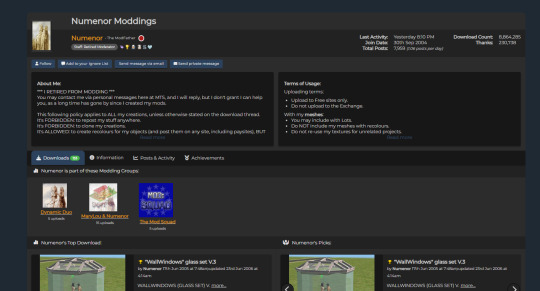
This application is often crashed, but handy and easy tool to make The Sims 3 custom content.
TSR Workshop by Mikael Sundberg, Johan & Thomas Isacsson.
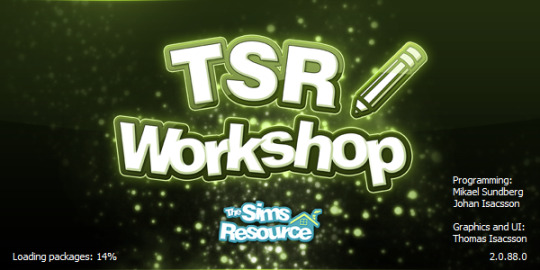
Thank you for making the interface very user friendly, easy to comprehend and nice to look at, including making Geo States and choose material of CC such as Phong Alpha and Glass.
S4studio by Andrew & Orange Mittens
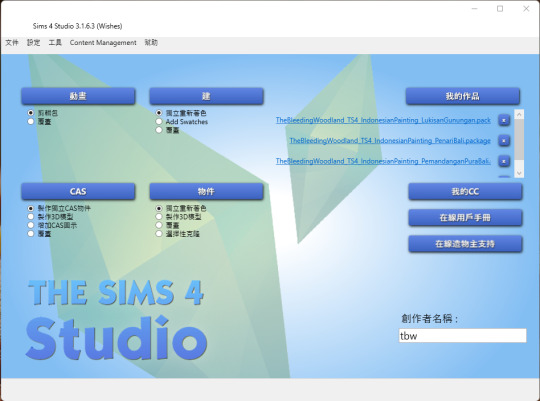
Thank you for making the tool integrated with Blender, which is free 3D program. User friendly, never experienced crashing when using S4Studio.
Youtubers...
First off...
LGR
Thank you for the review and the laugh, dude LazyGameReview. I know you are upset with The Sims 4, but reviews are overall very helpful, honest, nothing to hide, hilarious as well. Your Duke Nukem Sim is iconic. Bring him back again.

And other youtuber I'm fan of...
Onlyabidoang

The Sims 4 vs The Sims 3 vs The Sims 2 reviewer from Indonesia. Now inZoi. I got my CC reviewed by him in that video above, hahaha, thanks dude. I contributed something to our country.
If you notice, all of the core modders, developer of applications, and youtubers above are dude (except Orange Mittens).
Where is the female troll in Tumblr Sims community who had audacity of saying "Men playing Sims are rare" to me in comment section after I told in my post in 2022 that many my own in real life male friends, male co-workers, male bosses have played The Sims ?
Recently I got my old friend from college, played The Sims 3 again after we talked about enjoyable relaxing/casual games being played in holidays,
Then we talked about The Sims topic... He liked making houses in The Sims 3 back in 2010-ish year and stopped playing some years after that because bored. He didn't know the presence of The Sims community online. I gave him copy of pirated The Sims 3 + all Expansion packs + patches in HDD I downloaded from year 2013-2014 something before I purchased legally on Steam... Introduced him to ModTheSims and Tumblr Sims community, just in case he wanted to download some clothing CC and my own CC creation here... heheh
Yeah glad he enjoys it again.
#I kinda missed Twallan I hope he is healthy#successful#happy with his life although no longer play The Sims again#the sims cc community#the sims core modders appreciation#personal#twallan#nraas#numenor#tsr workshop#s4studio#LGR#Onlyabidoang#female troll
10 notes
·
View notes
Text

U.S. Air Force Testing New Sensors On The F-22
The F-22 recently tested multiple new sensors as part of the modernization, with plans for a rapid prototyping effort to field them and expand the capabilities of the jet.
Stefano D'Urso
F-22 new sensors
U.S. Air Force F-22 Raptors assigned to the 27th Expeditionary Fighter Squadron and Philippine Air Force FA-50PH light jet fighters conduct joint combined exchange training, above Basa Air Force Base, Philippines, on Aug. 9, 2024. (U.S. Air Force photo by Senior Airman Mitchell Corley)
The U.S. Air Force is testing multiple new advanced sensors on the F-22 Raptor, which could extend its service life and also be applied to systems of the Next Generation Air Dominance family. The info was disclosed during the Life Cycle Industry Days conference.
“The F-22 team is working really hard on executing a modernization roadmap to field advanced sensors, connectivity, weapons, and other capabilities,” said Brig. Gen. Jason D. Voorheis, Program Executive Officer for Fighters and Advanced Aircraft. “The Raptor team recently conducted six flight test efforts to demo advanced sensors.”
Voorheis also added that the service is planning for a rapid prototyping effort to get these sensors fielded quickly. “We’re executing that successfully, and that will lead to […] a rapid fielding in the near future,” he said.
The news was first reported by Air and Space Forces Magazine, which also added that Air Force officials have also confirmed that the stealthy pods seen since last year being tested on the F-22 are indeed InfraRed Search and Track (IRST) sensors. The development of a new IRST sensor for the Raptor was also confirmed by the service’s budget document, however they did not mention the sensor being podded.
The sensors are part of an upgrade program worth $ 7.8 billion before 2030, of which $ 3.1 billion are for research and development and the remaining $ 4.7 billion are for procurement. This is in contrast with previous statements that the Air Force was looking to retire the F-22 around 2030.
“From an F-22 sunsetting perspective, I don’t have a date for you,” said Voorheis when asked about the topic. “What I can tell you is that we are hyper-focused on modernization to sustain that air superiority combat capability for a highly contested environment for as long as necessary.”
This also reflects recent comments by Gen. Kenneth Wilsbach, head of Air Combat Command, who mentioned that the service should retain also the older F-22s in the Block 20 configuration, together with the latest ones. The General added that several upgrades are being planned and even the older Block 20s are still very capable, should they be needed for combat in an emergency.

An F-22 Raptor assigned to the 1st Fighter Wing, Joint Base Langley-Eustis, Virginia, approaches the boom of a 134th Air Refueling Wing KC-135R Stratotanker to refuel along the east coast of the United States Aug. 14, 2024. (U.S. Air Force photo by Tech. Sgt. Teri Eicher)
Voorheis also mentioned a software being integrated on the Raptor, which he defined as Government Reference Architecture Compute Environment, or “GRACE.” He further explained this open architecture software would allow “non-traditional F-22 software” to be installed on the aircraft and provide “additional processing and pilot interfaces.”
It’s unclear if the new GRACE is related to Project FOX, the innovation project tested last year which allowed to integrate on the F-35 software applications developed for the F-22. This allowed both 5th gen fighters to fly with common tactical software applications.
The F-22 upgrades
Some of the upgrades expected for the F-22 Raptor were unveiled in the Fiscal Year 23 budget request documentation and in an official artwork shared by Gen. Mark Kelly, then Commander of Air Combat Command. In the artwork we can see three Raptors loaded with new stealthy external fuel tanks, two underwing faceted pods and a new unknown air-to-air missile, but there are even more novelties in the documents, which unveils a previously undisclosed relationship between the F-22 and the development of the Next Generation Air Dominance (NGAD).
Two years after the upgrades were announced, we might have gotten, earlier this year, the first glimpse of the new stealthy external fuel tanks being developed for the F-22 Raptor. The aircraft was, in fact, spotted near the Mojave Air and Space Port and shows the Raptor with two fuel tanks, whose shape is reminiscent of the one shown in 2022.
The new tanks are officially known as Low Drag Tank and Pylon (LDTP) and designed to be stealthier and more aerodynamically efficient than the current 600-gallon fuel tanks. In the FY2023 budget request, the Air Force mentioned that the F-22 LDTPs are advanced technological designs providing increased persistence and range while maintaining lethality and survivability, critical to future mission execution and to maintaining Air Superiority.

U.S. Air Force Capt. Samuel “RaZZ” Larson, F-22 Raptor Demonstration Team commander and pilot, practices different maneuvers while training for the upcoming 2023 airshow season, at Joint Base Langley-Eustis, Virginia, Jan. 6, 2023. (U.S. Air Force photo by Airman 1st Class Mikaela Smith)
The low drag tanks are intended to reduce drag, facilitate supersonic flight with external tanks and extend the range of the F-22. The pylons are equipped with smart rack pneumatic technology to accurately control ejection performance and smooth wind swept surface for minimum drag without stores.
The two pods installed under the outer underwing hardpoints have already been spotted during flight testing on an F-22 at the Air Force’s Plant 42 facility in Palmdale, California, in February 2022. The latest budget documents mention an InfraRed Search and Track (IRST) sensor being developed for the F-22, which is now confirmed to be the sensor housed inside the two pods, although they could host also other capabilities in addition to the IRST.
In July 2024 we got an up-close look at one of the pods installed under a Rockwell Sabreliner 65 testbed after a test campaign at Nellis AFB, Nevada. It would have been expected to see some kind of transparent surface associated with the IRST, however the surfaces on the nose of the pod appeared to be opaque. We still cannot exclude that there are two different variants of the pod, depending on the equipment inside.
The last upgrade featured in the artwork is a new unknown air-to-air missile. While there are a number of air-to-air missile programs in the works, it is possible that the one in the image could be a representative design, which may or may not correspond to the real deal, for the highly secretive AIM-260 missile. So far, the missile has never been depicted in any kind of image and details about the program are very scarce.
The development of the AIM-260, also called Joint Advanced Tactical Missile, was first unveiled in 2019 and has been in the works at least since 2017. The goal of the new long-range air-to-air missile is to replace the AIM-120 AMRAAM (Advanced Medium Range Air-to-Air Missile) and counter the threat posed by the Chinese PL-15 missile, while avoiding any foreign threats being able to outrange the AIM-120.
Among the few known technical details, the new missile will be compatible with the AMRAAM dimensions, but obviously with greater range, and is planned to be carried in the F-22 weapons bay and on the F/A-18 at first, with the F-35 to follow. Flight tests are already in progress and the missile is expected to be fielded by next year. Because of these reasons, it would be reasonable to suppose that the one shown in the image could be at least a hint at the AIM-260.
Other upgrades mentioned in the budget request are a Mode 5 Identification Friend or Foe (IFF), Link 16 and Multifunction Information Distribution System Joint Tactical Radio System (MIDS JTRS), a new Operational Fight Program, advanced radar Electronic Protection, Embedded GPS/Inertial Navigation System (INS) Modernization (EGI-M), Open System Architecture (OSA), new encrypted radios.

File photo of the U.S. Air Force’s 5th gen aircraft, the F-22 and the F-35. (Photo: U.S. Air Force)
A new helmet is also being tested by F-22 pilots, as part of the Next Generation Fixed Wing Helmet program to replace the current HGU-55P helmet, which has been the standard issued helmet for the last 40 years. The goal is to provide pilots a more comfortable, stable, and balanced platform to accommodate helmet-mounted devices usage without imposing neck strain and discomfort to the user.
Despite various integration efforts in the past, the F-22 is not equipped yet with a helmet that provides the essential flight and weapon aiming information through line of sight imagery: the shape of the Raptor’s canopy, optimized to preserve Low Observability, doesn’t allow enough range of motion and minimum visibility to a pilot wearing the JHMCS or the Scorpion.
About Stefano D'Urso
Stefano D'Urso is a freelance journalist and contributor to TheAviationist based in Lecce, Italy. A graduate in Industral Engineering he's also studying to achieve a Master Degree in Aerospace Engineering. Electronic Warfare, Loitering Munitions and OSINT techniques applied to the world of military operations and current conflicts are among his areas of expertise.
@The Aviationist.com
14 notes
·
View notes
Text
cryptpad review !
in depth review of cryptpad as someone who is using it as a replacement for google docs because i don't trust google and i dipped the moment i heard "fully integrated ai" 🤭
we're scoring cryptpad on a scale of 1-10 based on its interface, features, accessibility, ease of access, and storage.
scoring criteria:
usability 10/10 : has a lot of formatting options, while also being easy on the eyes. offers features that allow the software to be easily customizable to each user's needs and preferences, or features that make writing easier, without being overwhelming.
accessibility 10/10 : includes accessibility options for eye strain/dyslexia/etc like a proper dark mode and dyslexia friendly fonts, while also having an easy-to-navigate layout, and a mobile app that is equally easy to use without losing its features. doesn't take a long time to load, and is easy to adapt to as a new user.
storage 10/10 : provides a free account with very high or unlimited storage. the documents and files you create don't take up a ton of space, and you have options for upgrading storage if applicable.
what is cryptpad?
similar to how docs operates on desktop, cryptpad is a website-based file drive and software. it's free to create an account, and offers a selection of different kinds of files you can make. here's a list of features i think are notable, first:
there's 10 different of kinds of files you can create, including even code documents! cryptpad also allows you to create as many folders as you like, upload pre-existing files or folders, and even allows you to add links to your drive if you have links you want to save.
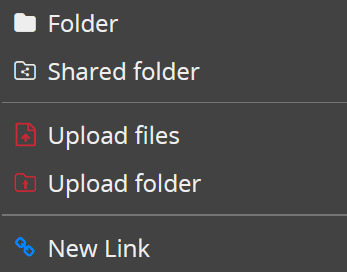
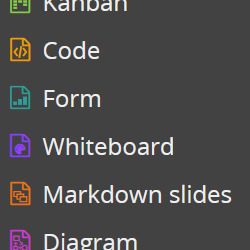
cryptpad always will open a new document or a pre-existing one in a new tab! when making a new document it automatically gives you the options to name it, password-lock it, set a destruction date.
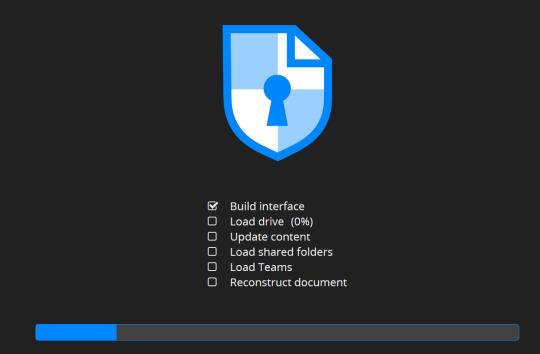

there's diversity in your sharing options: you can toggle and change the rules for the kinds of access people get to your shared documents!
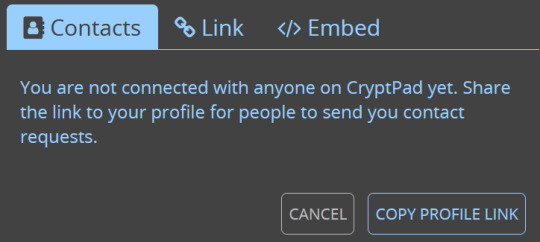
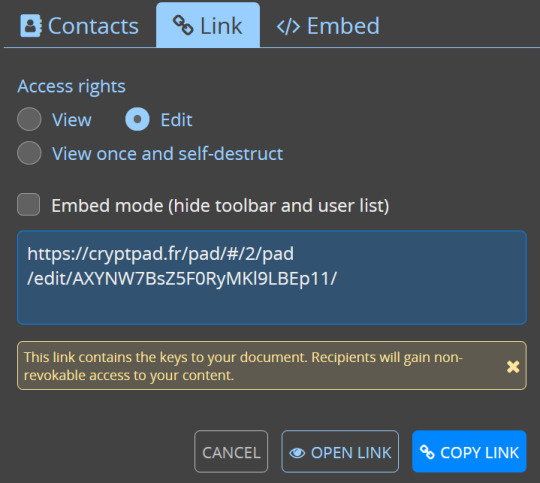

somewhat on the same topic, there's access settings and details you can review and tweak at any time.
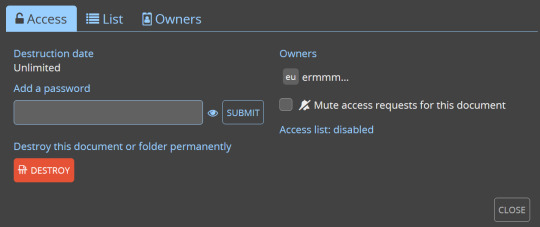
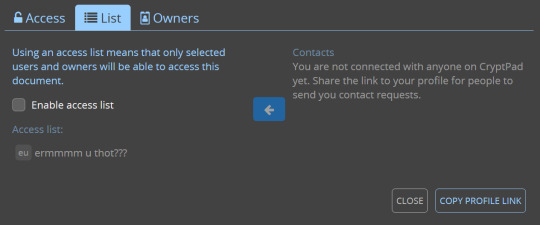
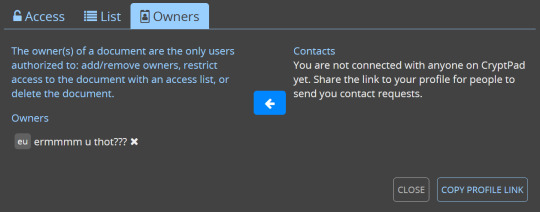
also you can change your account's display name in your settings LMAO

there's a chat option on documents for when you're working on something with other people in the upper right corner of your screen!
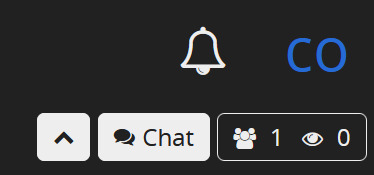
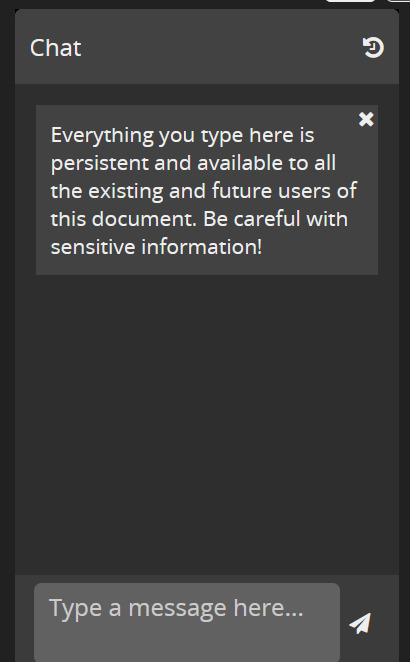
the actual scoring:
usability: 7/10
formatting your documents isn't terribly versatile on cryptpad, but it offers to you that you can make as many folders and nest as many of them as you want, while also making its layout and navigation simple. there isn't a ton of super fancy features in the rich text documents, but i enjoy that, to be honest! keeps it simple.

accessibility: 7.5/10
tragically, you cannot change the background of cryptpad files, and there's no mobile app :( if i could i would. they do, at least, offer a light or dark mode? i have dark mode selected of course, but it um... yeah the background is always just that white 😬 unfortunately. they do have basic font options, but personally, my love for cryptpad's accessibility lies in the fact you can make as many folders and nested folders as you damn well please, and the drive screen is SO easy to navigate.
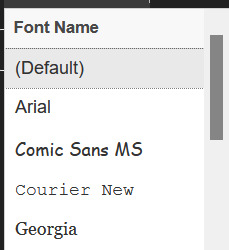

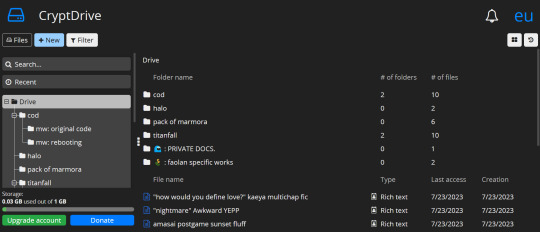
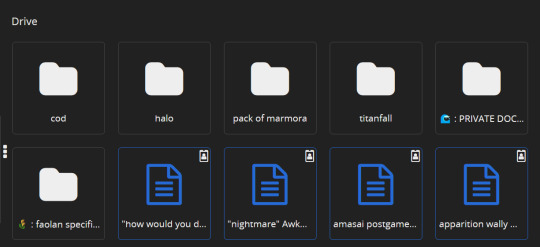
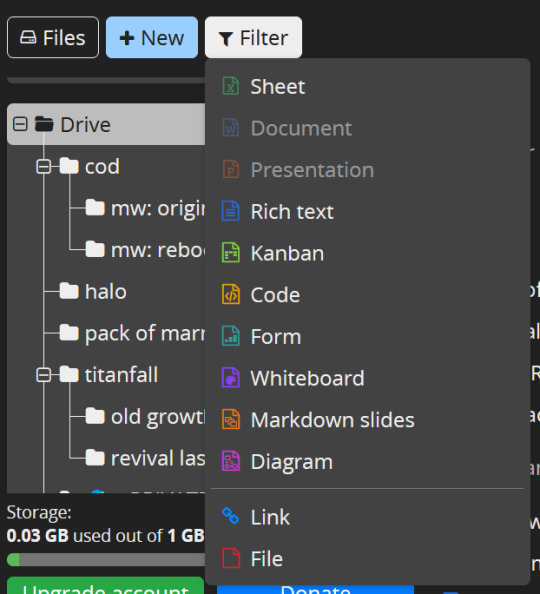
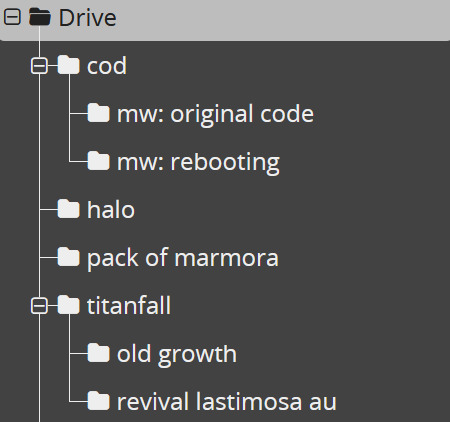

storage: 10/10
1GB for free, to start with? sir, i have 52 files in this drive (all rich text) and i have used 0.03 of that !! which, if i did my math correctly (debatable), that means i'll need over 5 thousand files to fill up that 1GB. AND it's upgradable, without the upgrade price being my soul? you can even donate just for funsies!

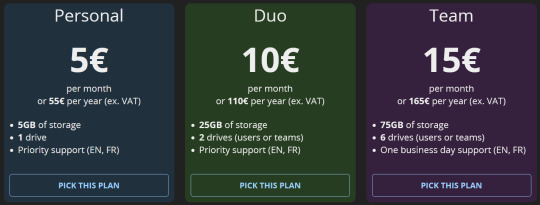
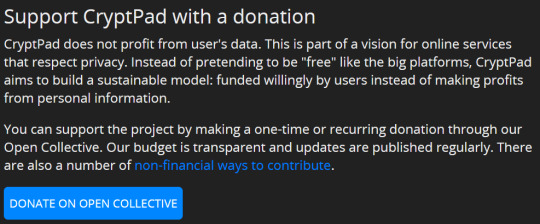
overall rating: 8/10
personally, i love cryptpad! i do wish you could change the document background color, and i wish that i had more formatting option like line spacing, but it's a good iteration of what i want in a writing program! i'd definitely recommend if you like supporting freelance guys doin their own thing while also not struggling to figure out how the fuck a writing software works.
56 notes
·
View notes
Text
Okay so my idea on the headmaster protocol would be that its first priority was to help stabilise Sam who was having side affects similar to his first overload of allspark knowledge and stuff, headaches and all the bad affects of trying to pull three all nighters trying to get a glyph drawn correctly.
It’s proposed that having a cybertronian neruolink with a bot who’s experienced with the allspark can help to mitigate and manage the energy and information consumption sam goes through. Bumblebee once being a allspark guardian and Sam’s closest bot volunteers.
After its successfull the government wanting to take full advantage of the opportunity for inhanced soldiers proposes using more properly trained and qualified personnel to form the “headmaster program” Lennox with ironhide would be the first approved soldiers to test the battlefield application before more would be approved.
However Sam wasn’t a soldier and with Lennox and ironhide it was decided they were to risky to be valid “weapons”. To emotionally compromised or trying to play hero amongst fellow soldiers. Thus the program was dub redundant and canceled. And Sam and Bee left to struggled trying to make any sense of allspark knowledge Sam spews up while tensions rise between human governments and autobots.

UNTIL
Wanting their own to be uncompromised and tied down by humans any longer Rachet and Prime created a plan to “Mute” the connection, tested on Bumblebee and Sam as they both wanted to help anyway they could. Ironhide turned down the idea, he and Lennox knew it was the best chance they had at doing more. After Bumblebee no longer felt Sam despite the binary connection existing still the autobots minus ironhide disappeared. Leaving Sector Seven to become a conspiracy theory rabbit hole once again.
Years later the autobots befriend more young humans with more promising fits for the headmaster connection

———-
Kinda want it to be reminiscent of the pacific rim idea of younger generation being able to be shaped better for the mental combatant conditions
It’s more likely just Jack and Miko and raf’s like why not bumblebee? You know his best friend who’s one of the best fighters??? They don’t want to tell the kids they already tried and kinda fumbled the headmaster idea but also trying to keep things burried just allows things to haunt you more
Also also adding the headmaster element is more the head component being detached inorder to closer manuver and monitor brain and and processor alignment and physical components being added and onlined to the human from the Cybertronian, so instead of the head physically making the exosuit the human is fused into a cybernetic/cyborgessqur suit that then can further fuse and connect to the cybertronians body liek micromaster i guess? But also the cybernetic suits Lennox and Sam have is actually augmented and integrated with/into their body’s extensively neurologically and physically connected systems with the intention to cross interface between human and bot
Which would be vastly different from how it would be done ever again. Like Sam needed to release brain pressure and strain caused to his entire body from the allspark and they tried to minorly alter the process for Lennox but didn’t know where to draw the line between man and bot so they went way overboard
19 notes
·
View notes
Text
Udaan by InAmigos Foundation: Elevating Women, Empowering Futures

In the rapidly evolving socio-economic landscape of India, millions of women remain underserved by mainstream development efforts—not due to a lack of talent, but a lack of access. In response, Project Udaan, a flagship initiative by the InAmigos Foundation, emerges not merely as a program, but as a model of scalable women's empowerment.
Udaan—meaning “flight” in Hindi—represents the aspirations of rural and semi-urban women striving to break free from intergenerational limitations. By engineering opportunity and integrating sustainable socio-technical models, Udaan transforms potential into productivity and promise into progress.
Mission: Creating the Blueprint for Women’s Self-Reliance
At its core, Project Udaan seeks to:
Empower women with industry-aligned, income-generating skills
Foster micro-entrepreneurship rooted in local demand and resources
Facilitate financial and digital inclusion
Strengthen leadership, health, and rights-based awareness
Embed resilience through holistic community engagement
Each intervention is data-informed, impact-monitored, and custom-built for long-term sustainability—a hallmark of InAmigos Foundation’s field-tested grassroots methodology.
A Multi-Layered Model for Empowerment

Project Udaan is built upon a structured architecture that integrates training, enterprise, and technology to ensure sustainable outcomes. This model moves beyond skill development into livelihood generation and measurable socio-economic change.
1. Skill Development Infrastructure
The first layer of Udaan is a robust skill development framework that delivers localized, employment-focused education. Training modules are modular, scalable, and aligned with the socio-economic profiles of the target communities.
Core domains include:
Digital Literacy: Basic computing, mobile internet use, app navigation, and digital payment systems
Tailoring and Textile Production: Pattern making, machine stitching, finishing techniques, and indigenous craft techniques
Food Processing and Packaging: Pickle-making, spice grinding, home-based snack units, sustainable packaging
Salon and Beauty Skills: Basic grooming, hygiene standards, customer interaction, and hygiene protocols
Financial Literacy and Budgeting: Saving schemes, credit access, banking interfaces, micro-investments
Communication and Self-Presentation: Workplace confidence, customer handling, local language fluency
2. Microenterprise Enablement and Livelihood Incubation
To ensure that learning transitions into economic self-reliance, Udaan incorporates a post-training enterprise enablement process. It identifies local market demand and builds backward linkages to equip women to launch sustainable businesses.
The support ecosystem includes:
Access to seed capital via self-help group (SHG) networks, microfinance partners, and NGO grants
Distribution of startup kits such as sewing machines, kitchen equipment, or salon tools
Digital onboarding support for online marketplaces such as Amazon Saheli, Flipkart Samarth, and Meesho
Offline retail support through tie-ups with local haats, trade exhibitions, and cooperative stores
Licensing and certification where applicable for food safety or textile quality standards
3. Tech-Driven Monitoring and Impact Tracking
Transparency and precision are fundamental to Udaan’s growth. InAmigos Foundation employs its in-house Tech4Change platform to manage operations, monitor performance, and scale the intervention scientifically.
The platform allows:
Real-time monitoring of attendance, skill mastery, and certification via QR codes and mobile tracking
Impact evaluation using household income change, asset ownership, and healthcare uptake metrics
GIS-based mapping of intervention zones and visualization of under-reached areas
Predictive modeling through AI to identify at-risk participants and suggest personalized intervention strategies
Human-Centered, Community-Rooted
Empowerment is not merely a process of economic inclusion—it is a cultural and psychological shift. Project Udaan incorporates gender-sensitive design and community-first outreach to create lasting change.
Key interventions include:
Strengthening of SHG structures and women-led federations to serve as peer mentors
Family sensitization programs targeting male allies—fathers, husbands, brothers—to reduce resistance and build trust
Legal and rights-based awareness campaigns focused on menstrual hygiene, reproductive health, domestic violence laws, and maternal care
Measured Impact and Proven Scalability
Project Udaan has consistently delivered quantifiable outcomes at the grassroots level. As of the latest cycle:
Over 900 women have completed intensive training programs across 60 villages and 4 districts
Nearly 70 percent of participating women reported an average income increase of 30 to 60 percent within 9 months of program completion
420+ micro-enterprises have been launched, 180 of which are now self-sustaining and generating employment for others
More than 5,000 indirect beneficiaries—including children, elderly dependents, and second-generation SHG members—have experienced improved access to nutrition, education, and mobility
Over 20 institutional partnerships and corporate CSR collaborations have supported infrastructure, curriculum design, and digital enablement.
Partnership Opportunities: Driving Collective Impact
The InAmigos Foundation invites corporations, philanthropic institutions, and ecosystem enablers to co-create impact through structured partnerships.
Opportunities include:
Funding the establishment of skill hubs in high-need regions
Supporting enterprise starter kits and training batches through CSR allocations
Mentoring women entrepreneurs via employee volunteering and capacity-building workshops
Co-hosting exhibitions, market linkages, and rural entrepreneurship fairs
Enabling long-term research and impact analytics for policy influence
These partnerships offer direct ESG alignment, brand elevation, and access to inclusive value chains while contributing to a model that demonstrably works.
What Makes Project Udaan Unique?

Unlike one-size-fits-all skilling programs, Project Udaan is rooted in real-world constraints and community aspirations. It succeeds because it combines:
Skill training aligned with current and emerging market demand
Income-first design that integrates microenterprise creation and financial access
Localized community ownership that ensures sustainability and adoption
Tech-enabled operations that ensure transparency and iterative learning
Holistic empowerment encompassing economic, social, and psychological dimensions
By balancing professional training with emotional transformation and economic opportunity, Udaan represents a new blueprint for inclusive growth.
From Promise to Power
Project Udaan, driven by the InAmigos Foundation, proves that when equipped with tools, trust, and training, rural and semi-urban women are capable of becoming not just contributors, but catalysts for socio-economic renewal.
They don’t merely escape poverty—they design their own systems of progress. They don’t just participate—they lead.
Each sewing machine, digital training module, or microloan is not a transaction—it is a declaration of possibility.
This is not charity. This is infrastructure. This is equity, by design.
Udaan is not just a program. It is a platform for a new India.
For partnership inquiries, CSR collaborations, and donation pathways, contact: www.inamigosfoundation.org/Udaan Email: [email protected]
3 notes
·
View notes
Text
Unlocking the Secrets to Effortless Compliance with ZATCA Phase 2
The Kingdom of Saudi Arabia is leading the way in digital transformation, especially with its structured e-invoicing initiatives. A significant part of this movement is ZATCA Phase 2, which aims to enhance transparency, boost efficiency, and ensure tax compliance across businesses.
If you are a business owner, accountant, or IT professional, understanding ZATCA Phase 2 is no longer optional. It is critical for ensuring that your operations remain compliant and future-ready. This guide breaks down everything you need to know in a simple, easy-to-understand manner.
What Is ZATCA Phase 2?
ZATCA Phase 2, also known as the Integration Phase, is the next major step following Saudi Arabia's Phase 1 e-invoicing requirements. While Phase 1 focused on the generation of electronic invoices, Phase 2 moves beyond that.
It requires businesses to integrate their e-invoicing systems with ZATCA’s Fatoora platform, allowing real-time or near-real-time transmission of invoices for clearance and validation.
This phase ensures that each invoice issued meets strict technical, security, and data format requirements set by the Zakat, Tax and Customs Authority (ZATCA).
Key Objectives Behind ZATCA Phase 2
Understanding the "why" behind Phase 2 can help businesses see it as an opportunity rather than a burden. The main goals include:
Improving tax compliance across all sectors
Minimizing fraud and manipulation of invoices
Streamlining government audits with real-time data
Promoting a transparent digital economy
Enhancing business operational efficiency
Who Needs to Comply?
All businesses registered for VAT in Saudi Arabia must comply with ZATCA Phase 2 regulations. This includes:
Large enterprises
Medium and small businesses
Businesses using third-party billing service providers
Companies operating across multiple sectors
Even if your business operates primarily offline, if you are VAT registered, you need to be compliant.
Important Requirements for ZATCA Phase 2
Compliance with ZATCA Phase 2 is not just about sending electronic invoices. It involves specific technical and operational steps. Here’s what your business needs:
1. E-Invoicing System with ZATCA Compliance
Your billing or accounting system must:
Issue invoices in XML or PDF/A-3 with embedded XML
Securely store invoices electronically
Incorporate UUIDs (Unique Identifiers) for each invoice
Attach a QR code for simplified verification
2. Integration with ZATCA Systems
Businesses must establish a secure Application Programming Interface (API) connection with ZATCA’s platform to allow the real-time sharing of invoice data.
3. Cryptographic Stamp
Each invoice must carry a cryptographic stamp. This verifies the invoice's authenticity and integrity.
4. Archiving
Invoices must be securely archived and retrievable for at least six years in case of audits or regulatory reviews.
Implementation Timeline for ZATCA Phase 2
ZATCA is rolling out Phase 2 gradually, targeting businesses in waves based on their annual revenues:
Wave 1: Businesses with annual revenues above SAR 3 billion (started January 1, 2023)
Wave 2: Revenues above SAR 500 million (started July 1, 2023)
Future Waves: Gradually extending to smaller businesses
Each business is officially notified by ZATCA at least six months before their compliance date, giving them time to prepare.
How to Prepare for ZATCA Phase 2: A Step-by-Step Guide
The good news is that with proper planning, adapting to ZATCA Phase 2 can be straightforward. Here’s a simple preparation roadmap:
Step 1: Review Your Current Systems
Audit your existing accounting and invoicing solutions. Identify whether they meet Phase 2’s technical and security standards. In most cases, upgrades or new software may be required.
Step 2: Select a ZATCA-Approved Solution Provider
Look for software vendors that are pre-approved by ZATCA and offer:
Seamless API integration
Cryptographic stamping
XML invoice generation
Real-time data reporting
Step 3: Integration Setup
Collaborate with IT teams or third-party service providers to set up a secure connection with the Fatoora platform.
Step 4: Employee Training
Ensure that relevant departments, such as finance, IT, and compliance, are trained to manage new invoicing processes and troubleshoot any issues.
Step 5: Test Your Systems
Conduct dry runs and testing phases to ensure that invoices are being properly cleared and validated by ZATCA without delays or errors.
Step 6: Go Live and Monitor
Once your system is ready and tested, begin issuing invoices according to Phase 2 standards. Regularly monitor compliance, system errors, and feedback from ZATCA.
Common Challenges and How to Overcome Them
Businesses often encounter several challenges during their Phase 2 preparation. Awareness can help you avoid them:
Integration Difficulties: Solve this by partnering with experienced ZATCA-compliant vendors.
Employee Resistance: Overcome this with proper training and clear communication on the benefits.
Technical Errors: Regular testing and quick troubleshooting can help prevent issues.
Lack of Budget Planning: Allocate a specific budget for compliance early to avoid unexpected costs.
Preparation is not just technical. It’s organizational as well.
Benefits of Early Compliance with ZATCA Phase 2
Early compliance does more than just prevent penalties:
Improves Financial Reporting Accuracy: Real-time clearance ensures clean records.
Builds Market Trust: Clients and partners prefer businesses that follow regulatory norms.
Enhances Operational Efficiency: Automated invoicing processes save time and reduce errors.
Boosts Competitive Advantage: Staying ahead in compliance projects an image of professionalism and reliability.
Businesses that proactively adapt to these changes position themselves as industry leaders in the evolving Saudi economy.
Conclusion
ZATCA Phase 2 is not just a regulatory requirement. It’s an opportunity to upgrade your operations, improve financial accuracy, and enhance business credibility.
By understanding the requirements, preparing strategically, and partnering with the right solution providers, your business can turn this challenge into a growth opportunity.
The sooner you act, the smoother your transition will be. Compliance with ZATCA Phase 2 is your gateway to becoming part of Saudi Arabia’s dynamic digital economy.
2 notes
·
View notes
Text
CNC Press Brake Machine in India: Shaping the Future of Metal Bending
In the dynamic world of metal fabrication, CNC Press Brake Machines have become indispensable. These machines are critical in industries that demand precision bending and forming of sheet metal components. In India, the rising focus on infrastructure development, automotive manufacturing, and localized production has driven the adoption of CNC press brake technology across various sectors.
From small workshops to large-scale factories, CNC press brakes are revolutionizing how Indian manufacturers handle metal forming—efficiently, accurately, and consistently.
What is a CNC Press Brake Machine?
A CNC (Computer Numerical Control) Press Brake Machine is used to bend and shape metal sheets with precision. It uses a punch and die to perform various bends, guided by a CNC system that ensures exact specifications for angle, length, and repetition.
Modern CNC press brakes are far more advanced than traditional mechanical or hydraulic versions. They come with programmable controls, automated back gauges, and advanced sensors to deliver high-speed and high-precision bending.
Why CNC Press Brakes are Gaining Popularity in India
1. Precision and Consistency
In sectors like automotive, aerospace, and electronics, even minor deviations in part dimensions can lead to quality issues. CNC press brakes eliminate human error and ensure consistent output across batches.
2. Growing Industrialization
India’s expanding industrial base, especially in Tier 2 and Tier 3 cities, is fueling demand for reliable fabrication equipment. CNC press brakes allow businesses to scale up production without compromising on accuracy.
3. Labour Efficiency
With a skilled labor shortage and rising wages, automation is becoming more attractive. CNC press brakes require minimal human intervention, reducing labor costs and dependency on manual operators.
4. Government Incentives
Government initiatives like Make in India and Production Linked Incentive (PLI) Schemes are encouraging manufacturers to invest in advanced machinery, including CNC press brakes, for higher productivity.
Key Features of CNC Press Brake Machines in the Indian Market
High-Tonnage Capability: Machines ranging from 30 to 1000+ tons to suit various applications.
CNC Control Systems: Brands like Delem, ESA, and Cybelec offer intuitive interfaces for programming and automation.
Servo-Electric or Hydraulic Drive Systems: Depending on precision, energy efficiency, and speed requirements.
Multi-Axis Back Gauge: Enables complex bends and reduces setup time.
Automatic Tool Changers (ATC): For higher production environments.
Leading Indian and International Brands
India has a strong presence of both domestic and international CNC press brake manufacturers. Some notable names include:
Hindustan Hydraulics
Electropneumatics
Energy Mission
LVD India
Amada (Japan)
Durma (Turkey)
Yawei (China)
These companies offer machines tailored to the needs and budget of Indian manufacturers.
Applications in India
Automobile Body & Chassis Manufacturing
Kitchen Equipment Fabrication
Electrical Enclosures & Cabinets
Elevator and Escalator Components
Construction and Infrastructure Products
Railways and Defence Equipment
Challenges for Indian Buyers
High Initial Investment: CNC press brakes can be capital intensive, though the ROI is excellent over time.
Skill Development: Operators need training to use CNC systems effectively.
After-Sales Service: Choosing a vendor with reliable local support is crucial for maintenance and uptime.
The Road Ahead: Smart Factories & Industry 4.0
India is steadily moving towards smart manufacturing. CNC press brakes are now integrating with IoT, ERP systems, and robotic automation, enabling real-time monitoring, predictive maintenance, and remote troubleshooting. This evolution is making Indian factories more agile and globally competitive.
Conclusion
The CNC Press Brake Machine is no longer a luxury—it's a necessity in modern Indian manufacturing. With its unmatched accuracy, efficiency, and automation capabilities, it empowers businesses to meet rising customer expectations while optimizing operational costs.
As India continues to climb the global manufacturing ladder, CNC press brake machines will play a pivotal role in shaping the future—quite literally.
2 notes
·
View notes
Text
Getting Started with Industrial Robotics Programming

Industrial robotics is a field where software engineering meets automation to drive manufacturing, assembly, and inspection processes. With the rise of Industry 4.0, the demand for skilled robotics programmers is rapidly increasing. This post introduces you to the fundamentals of industrial robotics programming and how you can get started in this exciting tech space.
What is Industrial Robotics Programming?
Industrial robotics programming involves creating software instructions for robots to perform tasks such as welding, picking and placing objects, painting, or quality inspection. These robots are typically used in factories and warehouses, and are often programmed using proprietary or standard languages tailored for automation tasks.
Popular Robotics Programming Languages
RAPID – Used for ABB robots.
KRL (KUKA Robot Language) – For KUKA industrial robots.
URScript – Used by Universal Robots.
Fanuc KAREL / Teach Pendant Programming
ROS (Robot Operating System) – Widely used open-source middleware for robotics.
Python and C++ – Common languages for simulation and integration with sensors and AI.
Key Components in Robotics Programming
Motion Control: Programming the path, speed, and precision of robot arms.
Sensor Integration: Use of cameras, force sensors, and proximity detectors for adaptive control.
PLC Communication: Integrating robots with Programmable Logic Controllers for factory automation.
Safety Protocols: Programming emergency stops, limit switches, and safe zones.
Human-Machine Interface (HMI): Designing interfaces for operators to control and monitor robots.
Sample URScript Code (Universal Robots)
# Move to position movej([1.0, -1.57, 1.57, -1.57, -1.57, 0.0], a=1.4, v=1.05) # Gripper control (example function call) set_digital_out(8, True) # Close gripper sleep(1) set_digital_out(8, False) # Open gripper
Software Tools You Can Use
RoboDK – Offline programming and simulation.
ROS + Gazebo – Open-source tools for simulation and robotic control.
ABB RobotStudio
Fanuc ROBOGUIDE
Siemens TIA Portal – For integration with industrial control systems.
Steps to Start Your Journey
Learn the basics of industrial robotics and automation.
Familiarize yourself with at least one brand of industrial robot (ABB, KUKA, UR, Fanuc).
Get comfortable with control systems and communication protocols (EtherCAT, PROFINET).
Practice with simulations before handling real robots.
Study safety standards (ISO 10218, ANSI/RIA R15.06).
Real-World Applications
Automated welding in car manufacturing.
High-speed pick and place in packaging.
Precision assembly of electronics.
Material handling and palletizing in warehouses.
Conclusion
Industrial robotics programming is a specialized yet rewarding field that bridges software with real-world mechanics. Whether you’re interested in working with physical robots or developing smart systems for factories, gaining skills in robotics programming can open up incredible career paths in manufacturing, automation, and AI-driven industries.
2 notes
·
View notes